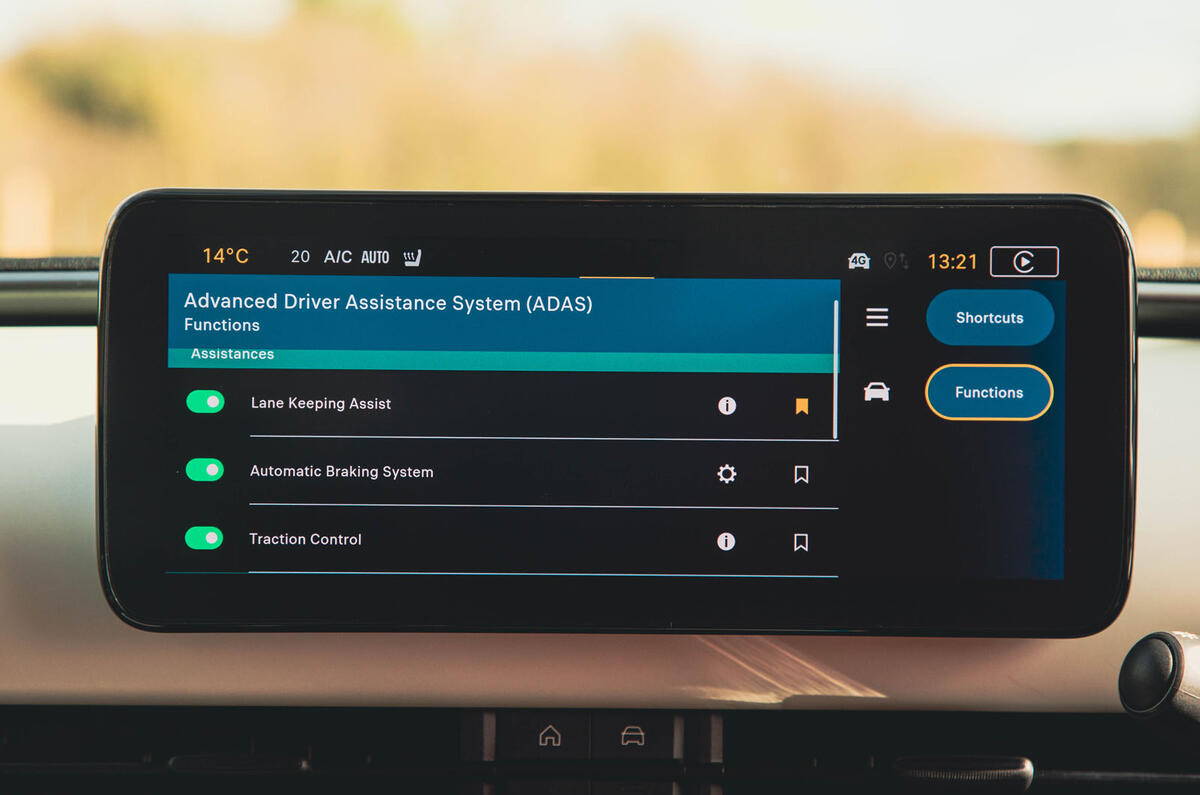Widespread confusion regarding the capabilities and limitations of advanced driver assistance systems (ADAS) is developing a ‘trust gap’ with modern cars.
That’s the conclusion of a new survey from technology specialist DG Cities, which warns that in order to buck this trend, dealers and car makers need to explain the tech better to buyers. From its findings, 40% of respondents report receiving insufficient information at the point of purchase.
Assistance systems such as blind-spot monitoring and lane centring were made standard on new cars through the European Union’s recent General Safety Regulations 2 (GSR2) with the aim of halving road deaths.
Highlighting some of the findings from the survey, DG Cities behavioural scientist Lara Suraci said: “A quarter of motorists were not happy with their cars’ ADAS features while one in 10 were unhappy with its accuracy.”
ADAS are deployed in different ways by different car makers. Researchers say this is confusing buyers and warn that it is key in the trust gap developing.
“We believe this variance between car makers risks confusing customers who shop around,” said Balázs Csuvár, director of innovation at DG Cities.
He added that because ADAS “wasn’t a key selling point” for car makers and because “there’s no marketing gain” to be had, “it is not anyone’s clear responsibility to promote and make ADAS acceptable and to function better”.
Yousif Al-Ani, principal engineer of ADAS at Thatcham Research, agrees that inconsistency between systems and their reliability and accuracy could be compounding the problem. “Models that appear to be relatively new may be using old technologies and cheaper cars are more likely to have older tech and lower computing power,” he said.
However, he added: “Despite these problems, I believe ADAS is getting better with each new model.”
Meanwhile, some organisations are trying to improve customers’ understanding of ADAS. The Motor Ombudsman, an impartial dispute resolution service, now requires the car dealers among its membership to explain the function and operation of ADAS at the point of a vehicle’s handover.
Managing director Bill Fennell said: “With ADAS features becoming more complex and commonplace, and sometimes varying between makes and models, the codes now make reference to retailers providing clear information on their function and limitations during the purchase process.”




Join the debate
Add your comment
If anyone really cared about road safety simply make the Advenced driving test mandatory a couple of years after the basic one.Stop expecting imperfect 'technology' that consumers have to pay through the nose to buy and maintain, for. Correct the problem, poor, lazy unpoliced driving standards, not try and sticj a plaster on teh symptom, which will do absolutely nothing for driver stadards, on the contrary it'll just dumb them down further, as if you don't use it, you loose it.Totally agree its cousing far too many distractions from actually paying attention to the road and conditions. They could at least have done something to controll the inept use use of lights; fog, main beam etc. And have all the road surveillance cameras actually do something usefull - catch driving too close ( less than the 2 second rule in teh dry - double it it adverse conditions, and middle lane hogs, these at least woudl be something that would ctually raise the bar and motorway safety.And as we left the EU, cars for the UK could have a 'off button' for all the tat, if the brexiters had anything good to effect from the proclaimes self sovereignty.
I've just taken delivery of a new VW ID7 in the past few months and have NEVER been so distracted by a car whilst driving than this one...
It frequently bongs and beeps without any indication of what it is complaining about...
More concerningly, on the motorway, the "Speed detection" works terribly. I can have cruise control running in the outside lane of the motorway, and all of a sudden it rapidly starts slowing me down because it detected a 50 zone - where from I have no idea! I suspect maybe on a side road or back of a truck it may have seen a 50 zone - but it comes as some surprise to drivers behind me when I start rapidly slowing down for no reason!